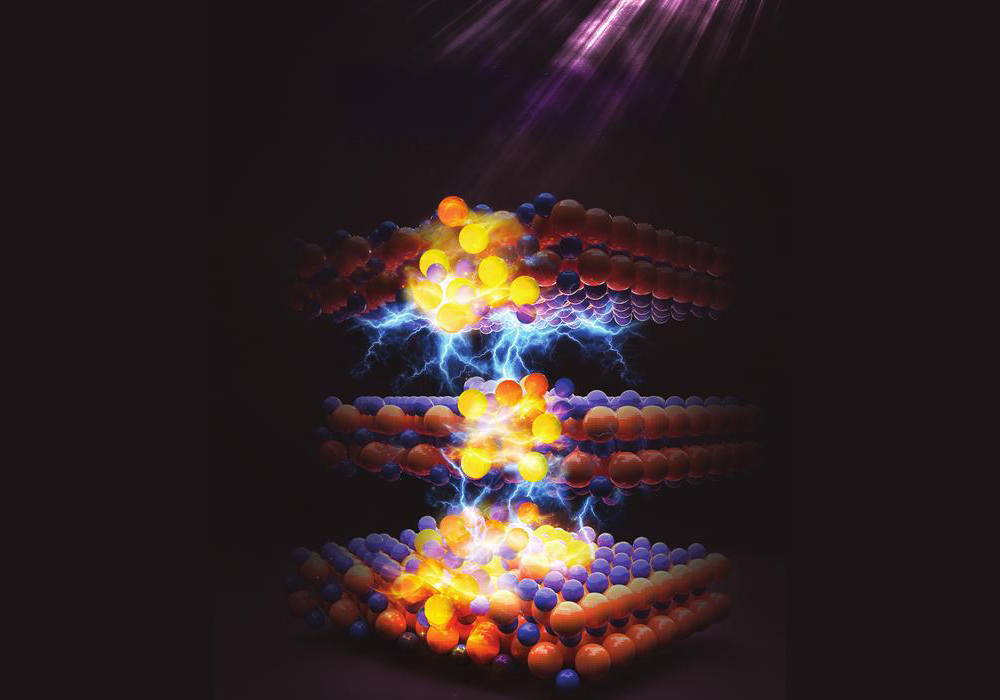
[Image above] AlphaGo, an artificial intelligence program, expends significantly more energy than its human opponents while playing the board game Go. For AI technologies to be sustainable, we must lower their power consumption. Credit: Rajarshee Mitra, YouTube
5G, the Internet of Things, self-driving cars—these are the technologies of the future, and they are coming sooner than you think. The basis for many of these coming technologies is artificial intelligence (AI), and while AI offers a host of advantages, that also means these technologies will require significant amounts of power. For example, AlphaGo, an AI program which has defeated a number of professional Go players, consumes 250 kW (about the power of a typical city bus) while a human brain consumes only 20 W, according to a NEDO Technology Strategy Center 2017 report.
If AI is to be a sustainable technology, we need to find ways to decrease its power consumption. In a recent open-access article published in the International Journal of Ceramic Engineering & Science, ACerS member Shunpei Yamazaki and his team from Semiconductor Energy Laboratory Co., Ltd. (Atsugi, Japan) review their work on one possible way to reduce consumption—use an advanced ceramic semiconductor for computer memory instead of silicon.
Memory chip manufacturers have been seeking to manufacture “universal memory,” or a single chip that is usable in all types of memory applications. In order to be used so broadly, the chip and underlying material must meet these four criteria:
- Unlimited write cycles (durable)
- Data retention with the power off (nonvolatile)
- High‐speed switching (fast)
- Extremely low power
Current memory technologies do not meet all four of these criteria and therefore are only useful in specific applications. For example, SRAM and DRAM (“internal volatile memory”) are fast and durable, but cannot retain data with the power off. Flash memory (NOR and NAND) have high retention, but are slow and require a lot of energy during the write cycles (no wonder phone batteries drain so quickly).
The material reported in this article, c‐axis–aligned crystalline indium‐gallium‐zinc oxide (CAAC‐IGZO), appears to meet all four criteria and has the potential to replace silicon in memory chips. First, CAAC-IGZO requires a very small amount of power. A field-effect transistor (FET) made from CAAC-IGZO showed extremely small leakage on the order of yocto-Amps (10-24) per micrometer. By comparison, a silicon-based FET typically has leakage currents that are 10-9 amps per micrometer—a quadrillion (1,000,000,000,000,000) times more current! The researchers attribute the low power consumption of CAAC-IGZO to its unique crystal structure that is well aligned along the c-axis in the planes of the layers but shows no clear grain boundaries.

Crystal structure of indium‐gallium‐zinc oxide (InGaZnO4). Credit: Yamazaki et al., International Journal of Ceramic Engineering & Science/Wiley (CC BY 4.0)
The researchers go on to methodically demonstrate how the material performs with respect to speed, durability, and volatility when fabricated into various devices via sputtering, a method currently used in mass production of electronics. In the end, this affordable material exhibits performance characteristics in the range indicative of commercial viability.
For someone like myself, who is not an electrical engineer, the researchers explain the concepts, tests, and results on CAAC-IGZO in such a way that I can understand their meanings and importance. If you work with electronic materials, you will likely get even more from this article than I did.
The paper, published in International Journal of Ceramic Engineering & Science, is “Crystalline IGZO ceramics (crystalline oxide semiconductor)–based devices for artificial intelligence” (DOI: 10.1002/ces2.10005).
If you enjoy this article, you are in luck—similar articles abound in volume 1, issue 1 of the International Journal of Ceramic Engineering & Science, which is ACerS’ first Gold Open Access Journal. Anyone anywhere can immediately read and download these articles without a subscription nor other payment.
Take a look at the other articles contained in this first issue, including articles about using recycled whiteware to reduce production costs for new whiteware, a review of tape casting preceramic polymers, effects of ZnO on the sintering of spinel, and experiments on joining of high-temperature ceramics with titanium.

Credit: ACerS
- Tape casting of preceramic polymers toward advanced ceramics: A review
- Influence of postsintered wastes incorporation on physico‐mechanical and structural evolution of vitreous ceramics
- Effects of ZnO addition on the sintering behavior and mechanical properties of magnesium aluminate spinel ceramics
- Experimental studies on joinability of zircaloy and SiC/SiC composite with titanium powder
To submit your manuscript to the International Journal of Ceramic Engineering & Science, go to https://mc.manuscriptcentral.com/ijces.
Author
Jonathon Foreman
CTT Categories
- Electronics

